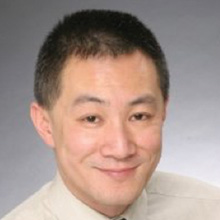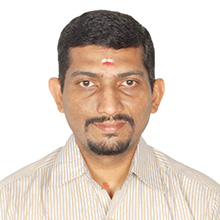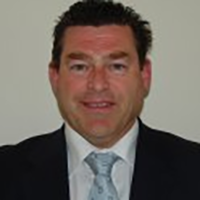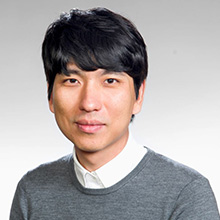
The Adelaide Tech Days Seminar will be held at Innovation House, Technology Park in Adelaide on Wednesday the 25rd March. Lunch will be provided and you are invited to attend as many presentations as your schedule allows. Attendance is free but spaces are limited, please register using the form at the bottom of this page.
Presentations
‘MODERNISING MODELLING, SIMULATION & TRAINING SYSTEMS’ - by Dr Howard Wang (RTI)
‘VERIFYING MULTICORE TIMING BEHAVIOR FOR DO-178C’ - by Dr Guillem Bernat
‘NEXT GENERATION GRAPHICS – GPU SHADER AND COMPUTE LIBRARIES’ - by Robert Pickles (CoreAVI)
‘LEFT SHIFT EMBEDDED SOFTWARE DEVELOPMENT & TESTING’ - by Kiran Kumar (Wind River)
‘SCALING WITH QT, FROM DESIGN TO DEVELOPMENT AND DEPLOYMENT OF MODERN HMI’ - by Sumitabh Ghosh (Qt)
‘SYSTEM ENGINEERING: REQUIREMENTS TO ARCHITECTURE TO SIMULATION’ - by Alex Shin (MathWorks)
WELCOME & INTRODUCTION
Presenter: John Salerno (Dedicated Systems)
Time: 9.00 am
‘MODERNISING MODELLING, SIMULATION & TRAINING SYSTEMS’
The modern field training paradigm requires rapidly-deployable, secure simulated environments. Modelling, Simulation, and Training (MS&T) systems need to be assembled and reconfigured in an agile manner from ready-made, commercial off-the-shelf (COTS) components with response times closely matched to real-world scenarios. High-fidelity simulation data must be sourced across a wide range of public, private and multinational operations sources. This is driving a core requirement to secure that data in order to prevent unauthorised access to both intellectual property and information sources across local and remote operations arenas and up to the cloud-based networks. On top of these challenges, there is a growing pressure for accelerated deployment of new MS&T scenarios to keep warfighters prepared for combat.
Consistent, repetitive exposure to simulated environments is the proven way to train warfighters in order for their reaction time and skills to become muscle memory, reflexive and honed. Effective training requires a system that provides true, high-fidelity simulations with response times closely matched to real-world scenarios. The most realistic training comes from using the same technology that is used in systems deployed in the real world. Yet there are challenges in creating a simulated, real-world scenario with several distributed components from an array of suppliers using different simulation standards.
This presentation describes how a standards-based communications framework can provide a framework for modern warfare training. It uses a multi-level secure (MLS) data architecture to address the challenges of integrating a wide range of MS&T systems, resulting in accelerated creation and delivery of impactful training simulations.
Presenter: Dr Howard Wang (RTI)
Dr Howard Wang (RTI) has been with RTI since 1996 and is responsible for expanding the adoption of DDS in the Asia Pacific region. He is an expert in embedded real-time systems specialising in network communications and systems integration. Howard has consulted with the NASA Kennedy Space Center in helping to rewrite the launch and processing software for the Space Shuttle and next generation launch vehicles for the US space program. He holds a PhD and an MS in Aeronautics and Astronautics from Stanford University, as well as BSEs in Aerospace and Computer Engineering from the University of Michigan. Howard has authored several papers presented in international journals and conferences.
Time: 9.30 am

‘VERIFYING MULTICORE TIMING BEHAVIOR FOR DO-178C’
The avionics industry is moving towards the use of multicore systems to meet the demands of modern avionics applications. To use these systems in mission or safety-critical contexts, their “worst-case” timing behavior must be verified for DO-178C certification. Existing techniques to verify software timing behavior are unsuitable to analyse multicore systems as they do not consider interference effects caused by contention for shared resources, which can have significant effects on software timing behavior and are often only discovered when analysing a system in-depth.
We describe a novel approach to characterise multicore systems, identify interference channels in them and produce evidence of multicore software timing behavior that takes interference effects into account and supports DO-178C compliance. The approach follows a V-model based methodology in which high- and low-level requirements for the analysis are defined before designing and implementing tests and producing verification results using the Rapita Verification Suite (RVS) software. Tests are supported by RapiDaemons; small applications that create a configurable degree of contention on shared resources.
We also present a case study that demonstrates use of the approach to study the timing behavior of the Darknet YOLOv3 application running on an NVIDIA Jetson TX2. Having identified requirements that the maximum slowdown for the software is 5X, the process was applied to study the effects of L3 cache contention from competing CPU cores on the software’s timing behavior and conclude that the software was robust to L3 cache contention when up to 3 CPU cores were applying sustained accesses to the L3 cache. The approach we describe provides a method to support DO-178C compliance for multicore systems, supporting their adoption for use in avionics systems.
Presenter: Dr Guillem Bernat
Dr Guillem Bernat is the CEO of Rapita Systems, which he co-founded in 2004 with Dr Ian Broster and Dr Antoine Colin as a spin-out from the Real-Time Systems Group of the University of York in the UK. Under his leadership both as CEO and Head of Sales, Rapita Systems has grown to to become the leader in software analysis and verification, serving customers in major companies across the world. Dr. Bernat is one of the architects of the Rapita Verification Suite (RVS) tool-set. Dr. Bernat has more than 70 published papers in international conferences and Journals, has lectured extensively in real-time systems and software verification and is a frequent speaker at international conferences.
Time: 10.30 am

‘SECURE THE CREATION OF NEXT-GENERATION DIGITAL SYSTEMS, ON EARTH & BEYOND’
Our industry is facing real challenges. Systems that have been in use for decades are now needing to be replaced or upgraded. There is a lot of investment in these systems that still have functional value. Yet the technology around these systems has advanced, making older architectures obsolete and upgradeability difficult or impossible, while modern design methods and practices and newer technologies enable real advances for embedded systems. This creates a vast gap between existing legacy systems and the future of modernised embedded systems.
In this session you will learn about how Wind River technologies bridge legacy with future embedded systems design in a way that maintains the requirements of embedded systems and enables the richness of future opportunities from advancing technologies/trends and much more…
Presenter: Kiran Kumar (Wind River)
Kiran Kumar is a Field Application Engineer at Wind River. He has over 21 years of experience with embedded software and systems spanning industries such as Aerospace and Defence and Industrial Automation. His current work includes assisting customers in architecting safety systems in a number of avionics platforms. He has previously worked at GE Fanuc Automation where he was responsible for commissioning safety systems for power plants, refineries and to other process control applications. He’s also worked in technical roles at GE Intelligent Platforms (Now Abaco), Mistral Solutions (Channel Partner for Curtiss Wright and Wind River) and he has extensive experience in systems engineering, troubleshooting, and the provision of consulting services. Kiran has both a Masters of Technology Degree in VLSI & Embedded Systems from Visvesvaraya Technological University and MBA from KSOU, India.
Time: 11.15 am

‘NEXT GENERATION GRAPHICS – GPU SHADER AND COMPUTE LIBRARIES’
Embedded Graphics libraries have evolved from OpenGL to next gen Vulkan libraries.
OpenCL and CUDA have been used for many years for GPU compute on a range of SoC devices with powerful embedded GPU chipsets.
OpenCL and CUDA were never able to be certified, due to the contributions from many developers.
Next generation autonomous vehicles, unmanned aircraft, transportation and even military vehicles will require both graphics, as well as GPU compute to implement DSP or FPGA logic is software, as well as Deep Machine Learning.
Vulkan libraries are available now and are defined by the Kronos Group, as well as this, a next generation of Vulkan safety critical library for safe Shader and GPU Compute is now available.
This presentation will look at Vulkan architectures, embedded system use and the implications for using GPU Compute, where certification may be a critical requirement for ISO 26262, EN50182, IEC 61508, DO178C certifiable embedded systems.
Presenter: Robert Pickles (CoreAVI)
Robert Pickles has been with Core Avionics & Industrial for just under one year and has been involved with avionics and transportation customers selecting CoreAVI graphics solu-tions for their certification projects. Robert has previous OpenGL experience on avionics projects and is pleased to be working with CoreAVI and their customers on the new CoreAVI safety cert Vulkan graphics libraries. Robert was previously a solution architect at SYSGO, also directly involved with certification solutions for avionics and transportation system. Robert has almost 30 years of avionics software and systems level experience from the Royal Air Force, SBS Technologies, GE Intelligent Platforms and BAE Systems.
Time: 12.45 pm

‘LEFT SHIFT EMBEDDED SOFTWARE DEVELOPMENT & TESTING’
Traditional Embedded Software development follows the model of Architectural study, board design, software development, Integration & testing, deploy and maintain. There are quite a few challenges at every stage in this approach which will stretch the software release cycles.
In this session you will learn about how Wind River Simulation technologies help move from physical hardware to a virtual lab, and how embedded software teams can revolutionise crucial aspects of their processes, enabling them to deliver better software faster.
“To see is to believe”, Watch out for interesting Live demos during the session…
Presenter: Kiran Kumar (Wind River)
Kiran Kumar is a Field Application Engineer at Wind River. He has over 21 years of experience with embedded software and systems spanning industries such as Aerospace and Defence and Industrial Automation. His current work includes assisting customers in architecting safety systems in a number of avionics platforms. He has previously worked at GE Fanuc Automation where he was responsible for commissioning safety systems for power plants, refineries and to other process control applications. He’s also worked in technical roles at GE Intelligent Platforms (Now Abaco), Mistral Solutions (Channel Partner for Curtiss Wright and Wind River) and he has extensive experience in systems engineering, troubleshooting, and the provision of consulting services. Kiran has both a Masters of Technology Degree in VLSI & Embedded Systems from Visvesvaraya Technological University and MBA from KSOU, India.
Time: 1.30 pm

‘SCALING WITH QT, FROM DESIGN TO DEVELOPMENT AND DEPLOYMENT OF MODERN HMI’
User experience (UX) is a term you cannot avoid these days. That’s because an excellent UX can more easily provide something that most other facets of your business cannot – a direct path to the customer’s heart, success of powerhouse companies like Apple and Tesla is dependent on their UX. An overwhelmingly positive user experience creates legions of dedicated customers and has the power to elevate your company into a cult-like brand. Qt framework is your perfect partner in making your intuitive designs a reality on a Desktop or an Embedded product.
Qt’s cross-platform framework and tools make development teams more productive and lets them focus on what makes your product stand out from the rest by making sure your UI is stable and performance centric that runs optimally on any platform. Qt offers you modern, responsive 2D and 3D user interfaces that exceed user expectations and it ensures consistent branded or native look and feel across target devices.
With high expectations from users from digital screens in every domain be it Automotive, Medical or Consumer Electronics Qt streamlines your workflows at every stage of your project and thus shortens the time to market. With Qt, Designers create and iterate prototypes on production grade hardware thus significantly shortening the Design – > Development life cycle.
Qt’s high scalability lets you save a lot of cost by giving you the freedom to choose the hardware from a low cost MCU based platform on BareMetal environment to Full-fledged MPU based platform running Embedded Linux/RTOS.
And yes, Qt’s C++ based framework delivers fast performance as well as provides flexibility to work with other technologies seamlessly. With a developer base of more than a million worldwide there always a Qt developer available when you need them.
This talk will take you through the journey of using Qt’s tools from Designing a static UI in a design software to creating a responsive UI prototype and deploying it on a live hardware for verification and testing. It will also touch upon the latest and greatest Qt has to offer from a commercial licensing perspective.
Presenter: Sumitabh Ghosh (Qt)
Sumitabh is a Pre-Sales Engineer/Solution Architect with The Qt Company for last two years. working closely with Australian and Indian Qt customers to deliver the right solution and solving customer problems. Sumitabh, a Computer Engineering graduate, has an over 10 years’ experience in Embedded system software in varied domains of Consumer Electronics, Digital Video Broadcasting and Automotive software. Before Qt Company Sumitabh was associated with organisations like Wipro Technologies, LGCNS, Broadcom and AllGo Embedded Systems (Visteon Corporation).
Time: 2.00 pm
‘SYSTEM ENGINEERING: REQUIREMENTS TO ARCHITECTURE TO SIMULATION’
System engineering and model-based system engineering can mean different things to different groups, but most definitions share a common set of concepts, including starting from a set of system-level requirements used to drive a system decomposition and requirements allocation process. Then trade studies are performed on system architecture alternatives to produce a candidate architecture from which the design is developed and then simulated to verify the requirements are met.
This presentation shows how MATLAB® and Simulink® support this workflow when combined with Simulink Requirements™ and System Composer™ by allowing users to:
- Capture, view, analyse, and manage requirements
- Develop a system architecture model from the requirements, existing Simulink models, ICDs, and externally created architectures or combinations of the above
- Examine the system architecture model using different views for different concerns
- Allocate (link) requirements to architectural components and perform coverage and change impact analysis
- Perform trade studies to compare, assess, or optimize the system architecture
- Design components specified in the system architecture model, Simulate the system composition to verify system-level behaviour
Presenter: Alex Shin (MathWorks)
Alex Shin (Mathworks) is a Senior Pilot (Software Project) Engineer at MathWorks. He specialises in helping customers in the area of simulation, verification and automatic code generation, primarily for clients in the aerospace, defence and automotive industries. His recent work includes defining verification and code generation process and implementation of Model-Based Design tools in large defence and automotive organisations. Mr. Shin received Bachelor’s degree from University of New South Wales in mechatronics engineering.
Time: 2.45 pm

Register for Tech Days

